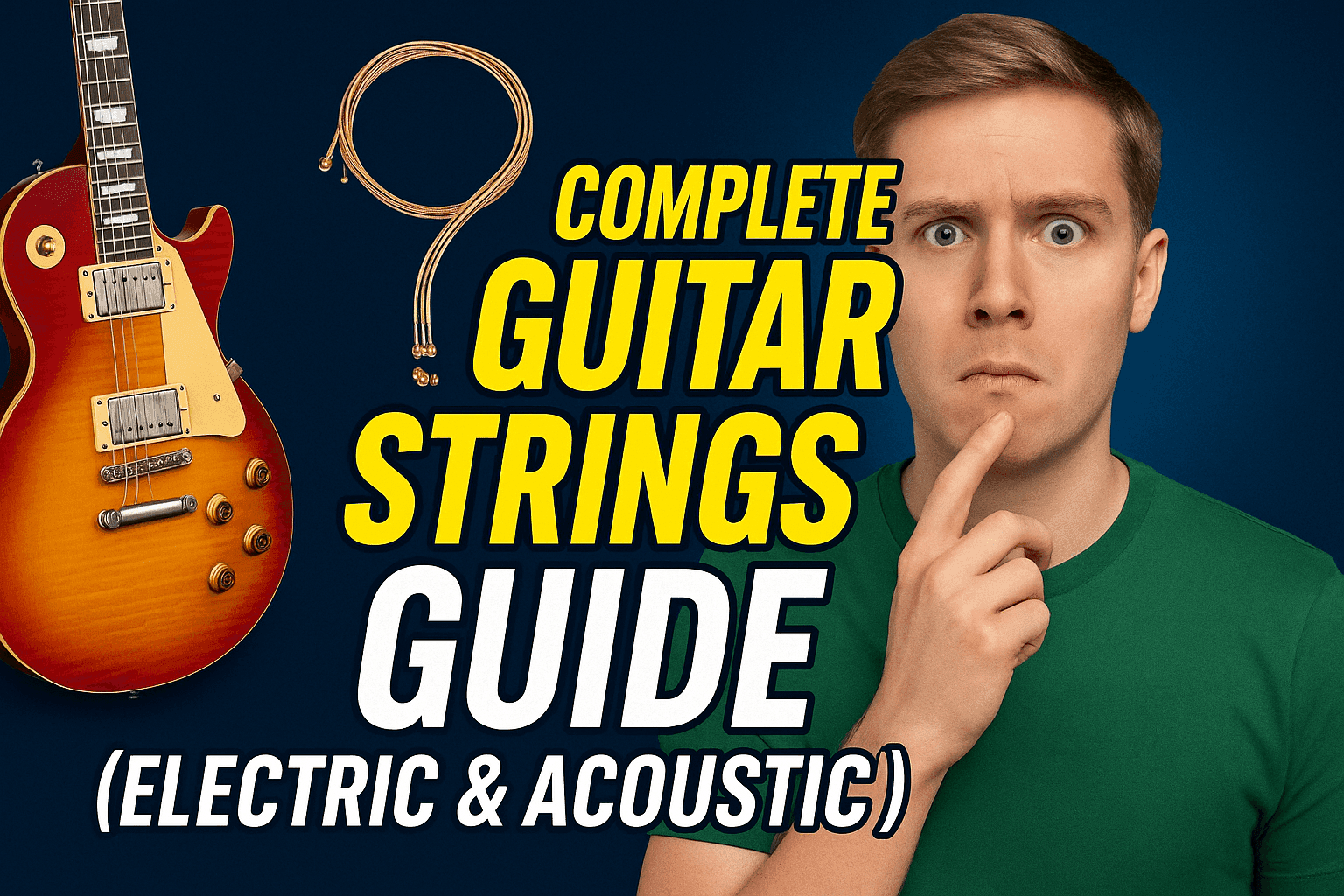
Art Gharana — 12 Mins read
Complete Guitar Strings Guide (Electric & Acoustic)
Musical Instruments
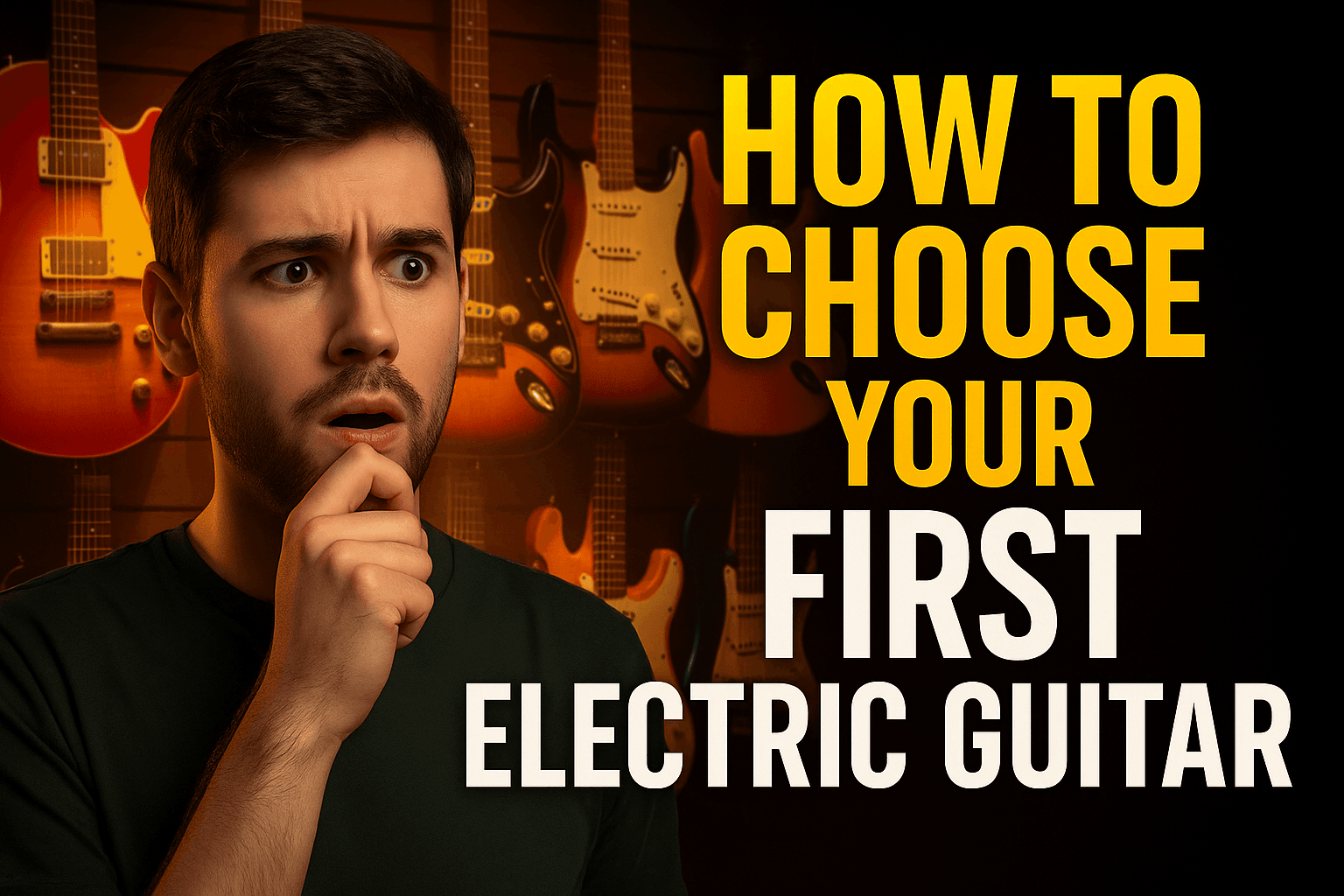
Choosing your first electric guitar can feel both exciting and overwhelming. With so many shapes, sizes, and features available, how do you know which one is the right fit for you? Whether you’re drawn to the iconic riffs of rock legends or the smooth tones of blues masters, the journey begins with finding the best beginner electric guitar that matches your style, comfort, and budget.
Think of your first guitar as more than just an instrument—it’s your gateway to creativity, expression, and countless hours of music-making. But with endless options on the market, from flashy models to highly rated electric guitars for beginners, it’s easy to get lost in the noise.
In this guide, we’ll break down everything you need to know: from understanding the basics of how electric guitars work to picking the right style, neck, and pickups for your playing needs. You’ll also discover tips for setting a budget, exploring trusted brands, and even what to look out for when trying a guitar in-store.
By the end, you’ll feel confident in choosing not just any guitar, but the best starter electric guitar for your unique musical journey. Ready to find the instrument that will spark your passion? Let’s dive in.
When you’re ready to test the waters before making a commitment, taking a trial lesson can make all the difference. A trial session lets you:
If you want a worthy trial, consider signing up for a trial class at Art Gharana. You’ll get a preview of their course curriculum, meet expert teachers, and see how lessons align with your musical goals — all without risk. Book a trial class with Art Gharana.
If you’re just starting your musical journey, it’s important to first understand what makes an electric guitar unique. Unlike an acoustic, which produces sound naturally through its hollow body, an electric guitar relies on pickups and amplification to create its powerful, versatile tones. This is why many musicians call it the heart of modern music.
But before you start searching for the best beginner electric guitar, let’s break down a few essentials:
Understanding these fundamentals will give you the confidence to explore your options and eventually land on the best starter electric guitar that feels like an extension of your musical voice.
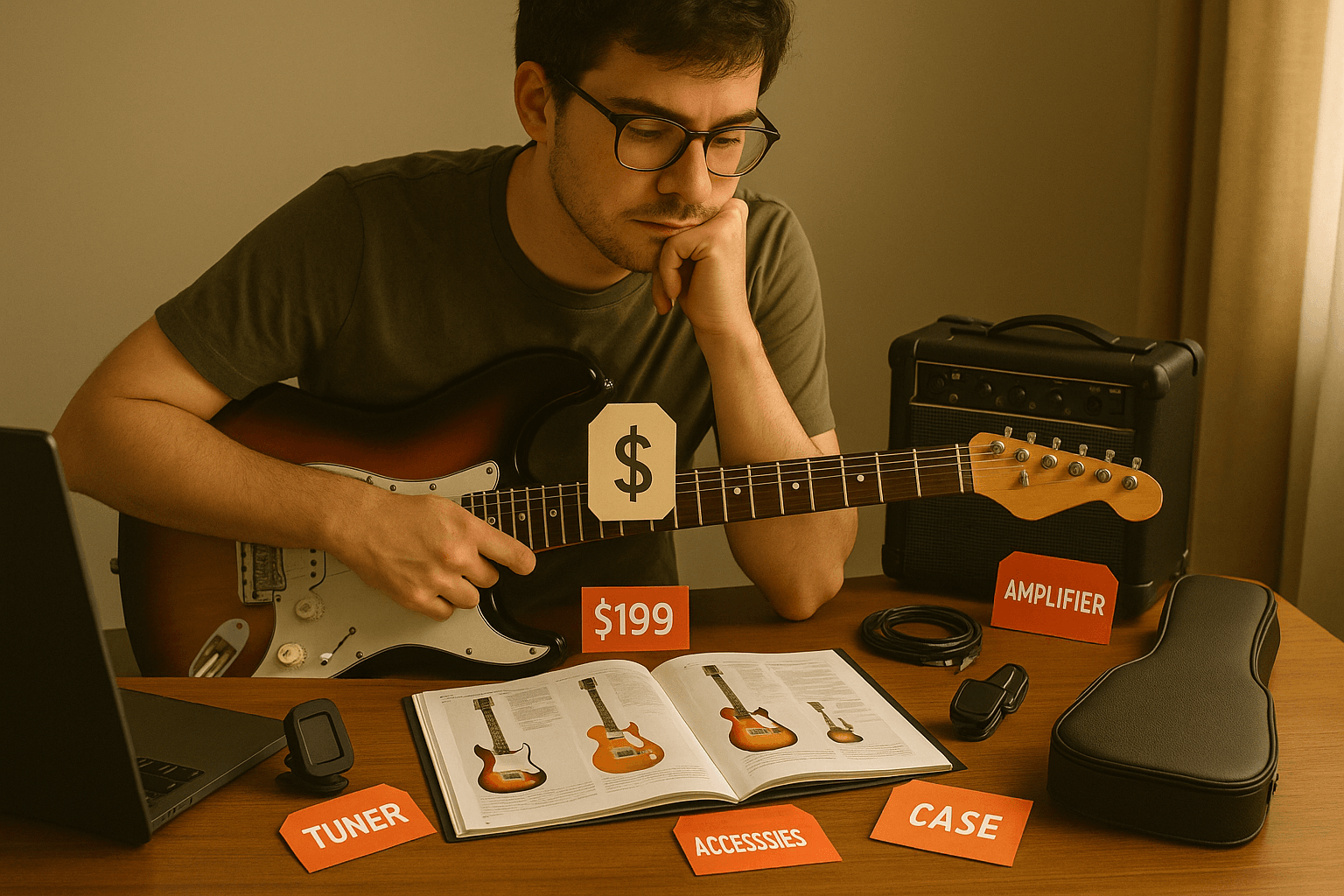 One of the biggest questions beginners ask is: how much is a good electric guitar? The truth is, your budget doesn’t just determine the guitar you buy—it shapes your overall learning experience. From instruments to accessories, it’s important to know where your money is best spent.
One of the biggest questions beginners ask is: how much is a good electric guitar? The truth is, your budget doesn’t just determine the guitar you buy—it shapes your overall learning experience. From instruments to accessories, it’s important to know where your money is best spent.
If you’re a beginner, an *entry level electric guitar is usually the smartest choice. These models are affordable, lightweight, and designed with learners in mind. They may not have all the bells and whistles of premium models, but they give you exactly what you need to start strong.
Mid-range guitars, on the other hand, offer slightly better craftsmanship, upgraded pickups, and enhanced durability. If you’re committed to long-term playing, they can provide the best electric guitar value.
When planning your budget, remember it’s not just about the guitar itself. You’ll also need to consider:
It’s easy to get caught up in the idea that a costly guitar guarantees quality. But many players find that a decent electric guitar in the entry-level or mid-range category is more than enough to learn and progress. What truly matters is finding a guitar that feels comfortable, stays in tune, and motivates you to keep playing.
By setting your budget wisely, you’ll ensure that your first purchase supports—not hinders—your growth. And when you’re ready to invest in lessons, pairing your instrument with guided training can maximize your progress. (This is also where we can naturally introduce Art Gharana’s online guitar classes in this section if you’d like me to add the link placement here.)
One of the biggest questions beginners ask is: how much is a good electric guitar? The truth is, your budget doesn’t just determine the guitar you buy—it shapes your overall learning experience. From instruments to accessories, it’s important to know where your money is best spent.
If you’re a beginner, an entry level electric guitar is usually the smartest choice. These models are affordable, lightweight, and designed with learners in mind. They may not have all the bells and whistles of premium models, but they give you exactly what you need to start strong.
Mid-range guitars, on the other hand, offer slightly better craftsmanship, upgraded pickups, and enhanced durability. If you’re committed to long-term playing, they can provide the best electric guitar value.
When planning your budget, remember it’s not just about the guitar itself. You’ll also need to consider:
While investing in the right instrument is important, investing in learning is just as valuable. Many beginners find that structured lessons help them progress faster and avoid costly mistakes. If you’re exploring guided training, Art Gharana’s online guitar classes are designed for all levels, offering expert instruction and flexible schedules that fit your budget.
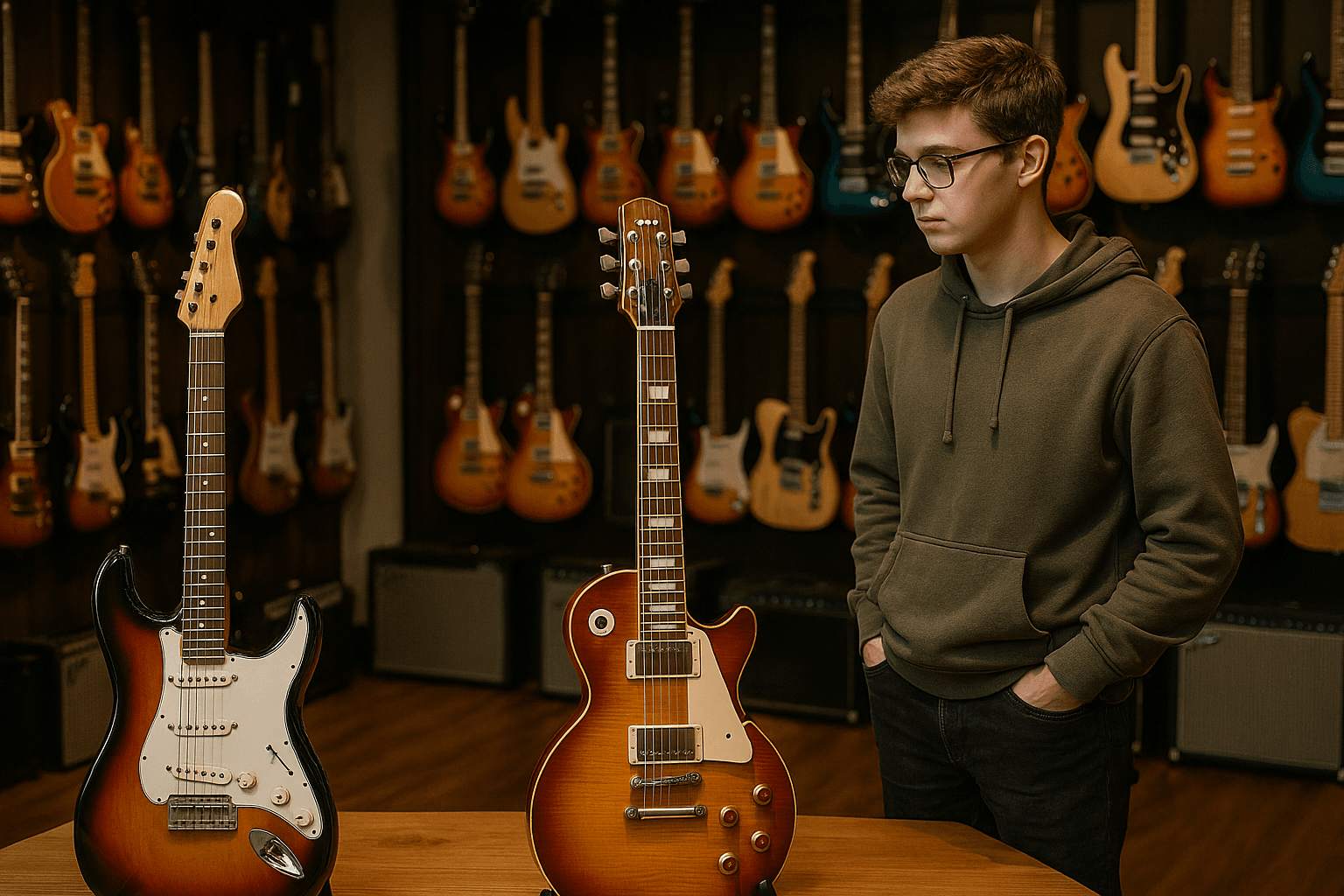 When you walk into a store or scroll through online catalogs, the sheer variety of electric guitar shapes can feel overwhelming. Should you go for the classic curves of a Stratocaster, the solid heft of a Les Paul, or something sleek and modern? The answer often comes down to comfort, playability, and personal taste.
When you walk into a store or scroll through online catalogs, the sheer variety of electric guitar shapes can feel overwhelming. Should you go for the classic curves of a Stratocaster, the solid heft of a Les Paul, or something sleek and modern? The answer often comes down to comfort, playability, and personal taste.
Some body shapes have become legendary in the music world, and for good reason:
Exploring these designs helps you find not just a guitar you love visually, but one that suits your playing style.
It’s tempting to choose based on looks alone, but the good starter electric guitar for you should feel comfortable in your hands and against your body. A guitar that’s too heavy or awkward may discourage you from practicing, no matter how good it looks on stage.
If you’re younger or have smaller hands, opting for a lighter, more compact model can make learning easier. On the other hand, if you’re aiming for a guitar with a fuller sound, a slightly heavier best starter electric guitar might be worth considering.
A good quality electric guitar doesn’t always mean a high price tag. Many beginner-friendly brands create durable, great-sounding instruments that balance cost with performance. The key is to prioritize how the guitar feels to play, rather than chasing flashy finishes or add-ons you won’t use right away.
By focusing on style, comfort, and build, you’ll be one step closer to finding the guitar that not only inspires you but also makes practice sessions enjoyable. After all, your first guitar should be a motivator, not a roadblock.
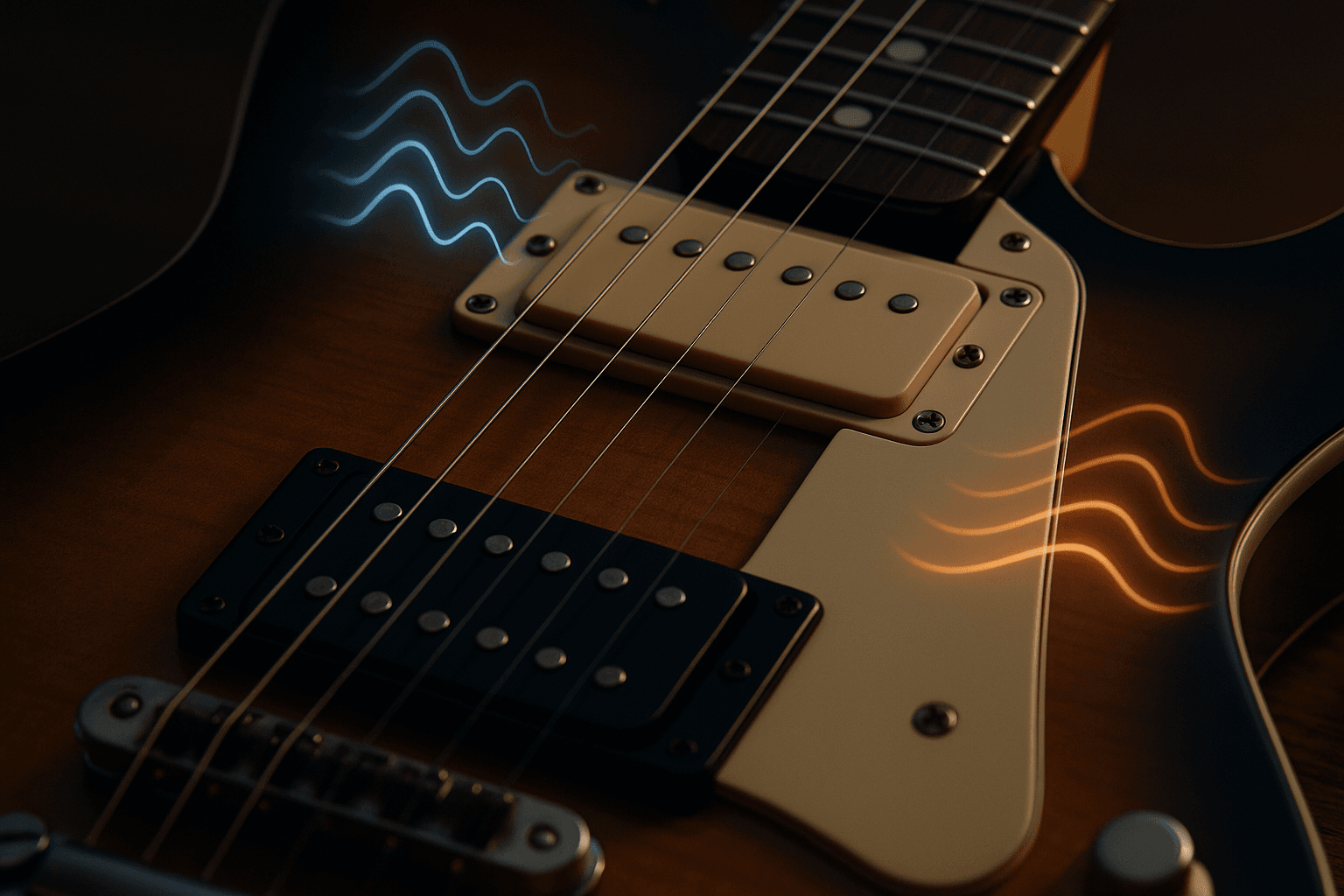 If the body gives a guitar its shape and feel, the pickups give it its voice. For beginners, understanding pickups might sound a little technical at first, but this knowledge is crucial when choosing the best learning electric guitar for your style.
If the body gives a guitar its shape and feel, the pickups give it its voice. For beginners, understanding pickups might sound a little technical at first, but this knowledge is crucial when choosing the best learning electric guitar for your style.
Pickups are small magnetic devices placed under the strings. When you play, they capture the string’s vibrations and convert them into an electrical signal, which your amp then turns into sound. Think of them as the microphone of your guitar—shaping the tone before it even reaches the speaker.
Choosing the right pickup setup can determine whether your guitar feels inspiring or limiting. If you want versatility, look for guitars with multiple pickup settings, so you can explore everything from soft cleans to gritty distortion. This is why many teachers recommend a recommended electric guitar with a flexible pickup system to new players—it allows you to grow without quickly outgrowing your instrument.
When you’re comparing models, don’t just focus on looks or price. Pay attention to the pickups, because the right choice will help you unlock sounds that keep you motivated to practice. A best rated electric guitar for beginners often balances comfort with a pickup setup that’s simple yet versatile, ensuring you don’t feel boxed in as your skills expand.
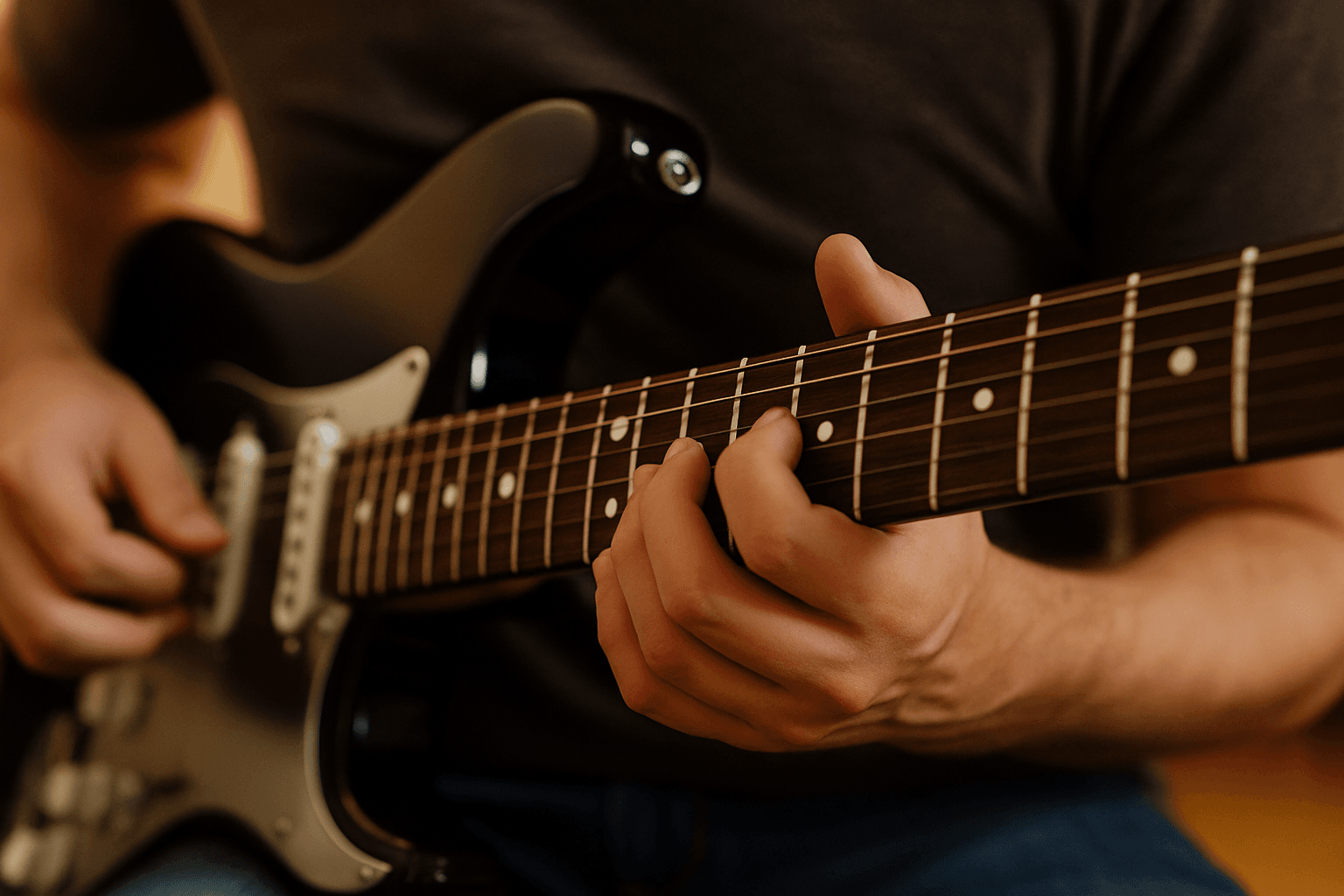 When it comes to choosing your first guitar, the way it feels in your hands is just as important as how it sounds. The neck and playability of an instrument can determine whether you’re excited to practice daily or frustrated after just a few sessions. That’s why finding the easiest electric guitar to play should be at the top of your list.
When it comes to choosing your first guitar, the way it feels in your hands is just as important as how it sounds. The neck and playability of an instrument can determine whether you’re excited to practice daily or frustrated after just a few sessions. That’s why finding the easiest electric guitar to play should be at the top of your list.
Guitar necks come in different shapes—often referred to as “profiles.” Some are slim and fast, making it easier for beginners to move between chords, while others are thicker and provide a solid grip for players with larger hands. Trying out different profiles helps you discover what feels most natural to you.
A good beginner electric guitar usually falls into the shorter scale category, making it less intimidating when you’re just starting out.
“Action” refers to how high the strings sit above the fretboard. Lower action makes a guitar easier to play, reducing finger strain. Many of the top beginner electric guitars come with beginner-friendly setups out of the box, but you can also have a guitar professionally adjusted for optimal comfort.
A flashy design might catch your eye, but if the neck feels awkward or the action is too high, your progress will be slower. Prioritizing playability ensures you spend more time enjoying music and less time battling your instrument.
If you’re uncertain which neck style or setup works best for you, one of the smartest steps is to test it under guidance. Platforms like Art Gharana allow you to book a trial class, where experienced teachers can help you understand how different guitar builds affect playability. This way, you’re not just guessing—you’re making an informed choice with expert input.
One of the most exciting parts of buying your first guitar is choosing an instrument that matches the kind of music you love. After all, your guitar isn’t just a tool—it’s a reflection of your style and personality. Whether you dream of shredding heavy riffs, strumming soulful ballads, or exploring jazz improvisations, there’s a recommended electric guitar for beginners that aligns perfectly with your goals.
When your guitar produces the tones you love, you’re naturally more motivated to practice. Imagine trying to play metal riffs on a guitar built for jazz—the mismatch could hold back your progress. On the other hand, the right choice will inspire creativity and help you stay consistent with your learning.
As you advance, your needs may change. That’s why many players start with a versatile, good intermediate electric guitar—something that’s easy to learn on but also capable of handling more complex styles as their skills grow.
In the end, think about the music that excites you the most. Choosing a guitar that fits that passion is the fastest way to stay motivated, learn quickly, and truly enjoy your journey.
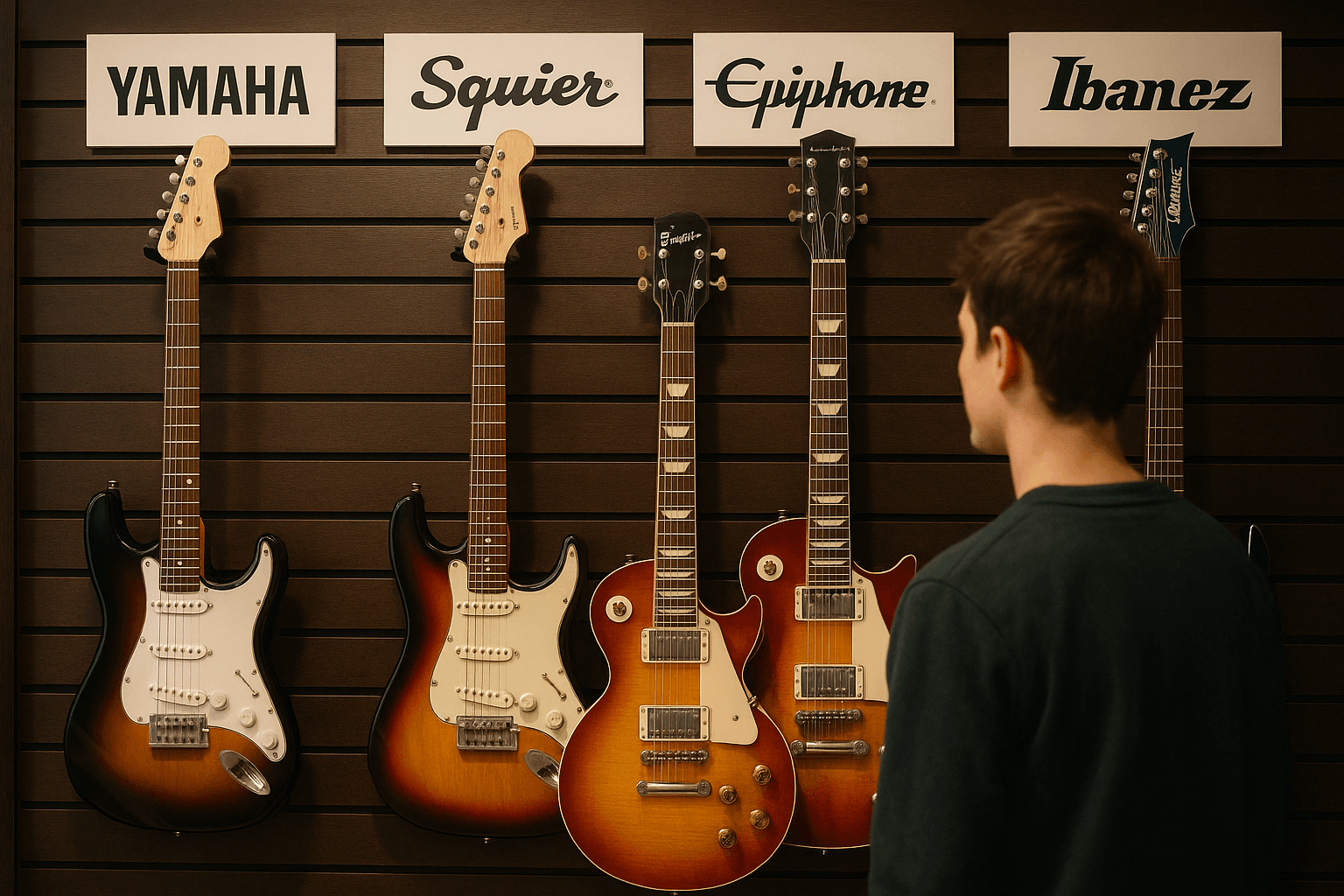 When you’re buying your first guitar, the brand name on the headstock matters more than many beginners realize. Established brands have spent decades refining their instruments, which means even their entry level electric guitars are built with reliability in mind. Choosing from good electric guitar brands ensures you’re investing in quality, durability, and consistent performance.
When you’re buying your first guitar, the brand name on the headstock matters more than many beginners realize. Established brands have spent decades refining their instruments, which means even their entry level electric guitars are built with reliability in mind. Choosing from good electric guitar brands ensures you’re investing in quality, durability, and consistent performance.
While personal preference plays a role, some companies consistently make good electric guitars for beginners:
1 . Yamaha – Affordable, versatile, and known for reliable beginner models. 2 . Squier (by Fender) – Offers the Stratocaster and Telecaster experience at a budget-friendly price. 3 . Epiphone (by Gibson) – Famous for Les Paul and SG styles, giving beginners a taste of classic rock tones. 4 . Ibanez – Lightweight with slim necks, perfect for fast learners and rock enthusiasts.
Sure, a no-name guitar might seem like a bargain, but many cheap models sacrifice playability and durability. A warped neck or faulty pickups can discourage you from practicing and end up costing more in the long run. A decent electric guitar from a reliable brand is always a smarter investment than a flashy but poorly made option.
Not every beginner needs a top-tier instrument right away. The goal is to find a guitar that gives you confidence without straining your budget. That’s where recommended electric guitars from reputable brands shine—they balance affordability with long-term value.
By choosing wisely, you’re not just buying your first instrument—you’re setting yourself up for a smooth and inspiring learning journey.
One of the most overlooked aspects of becoming a skilled guitarist is confidence. You can learn all the chords, scales, and songs you want, but without belief in your ability, playing in front of others—or even progressing on your own—can feel intimidating. So, how do you build that confidence? The answer lies in consistent practice and smart goal setting.
Think about it: if you only practice once a week, your fingers, memory, and rhythm will constantly need to “catch up.” But practicing for just 15–20 minutes daily can create muscle memory that allows your playing to feel effortless over time. Confidence doesn’t come from knowing everything—it comes from trusting that what you do know will be there when you need it.
Here are some simple yet powerful ways to grow your self-assurance while learning guitar:
1 . Set achievable milestones
2 . Record your progress
3 . Play in front of small audiences
4 . Celebrate small wins
Here’s the beauty of consistent practice: the more you play, the more confident you feel. And the more confident you feel, the better you play. This positive cycle makes guitar learning not just about technical skills but also about developing self-trust.
So next time you sit down with your guitar, remember—confidence isn’t something you wait for. It’s something you build, one chord, one song, and one practice session at a time.
Learning guitar is more than just picking up an instrument—it’s about discovering a new way to express yourself, building confidence, and enjoying the process of making music. Whether you’re practicing basic chords, exploring scales, or finally nailing that favorite song, every step you take brings you closer to becoming the guitarist you’ve always wanted to be.
But here’s the truth: progress comes with patience, practice, and the right mindset. You don’t need to master everything overnight. Instead, focus on consistency, set small goals, and celebrate your wins along the way. Over time, you’ll find that what once felt impossible becomes second nature.
So, let me ask you—what’s stopping you from starting today? If you’ve been waiting for the perfect time, this is it. The guitar isn’t just an instrument; it’s your partner in creativity, relaxation, and self-expression.
To recap, here are the takeaways you should keep in mind:
If you’re ready to take the first step, commit to your practice and let the music flow. After all, the joy of guitar isn’t just in playing notes—it’s in creating moments that stay with you.
So grab your guitar, strum that first chord, and begin your journey today. Who knows? A year from now, you might look back and realize this was the moment that changed everything.